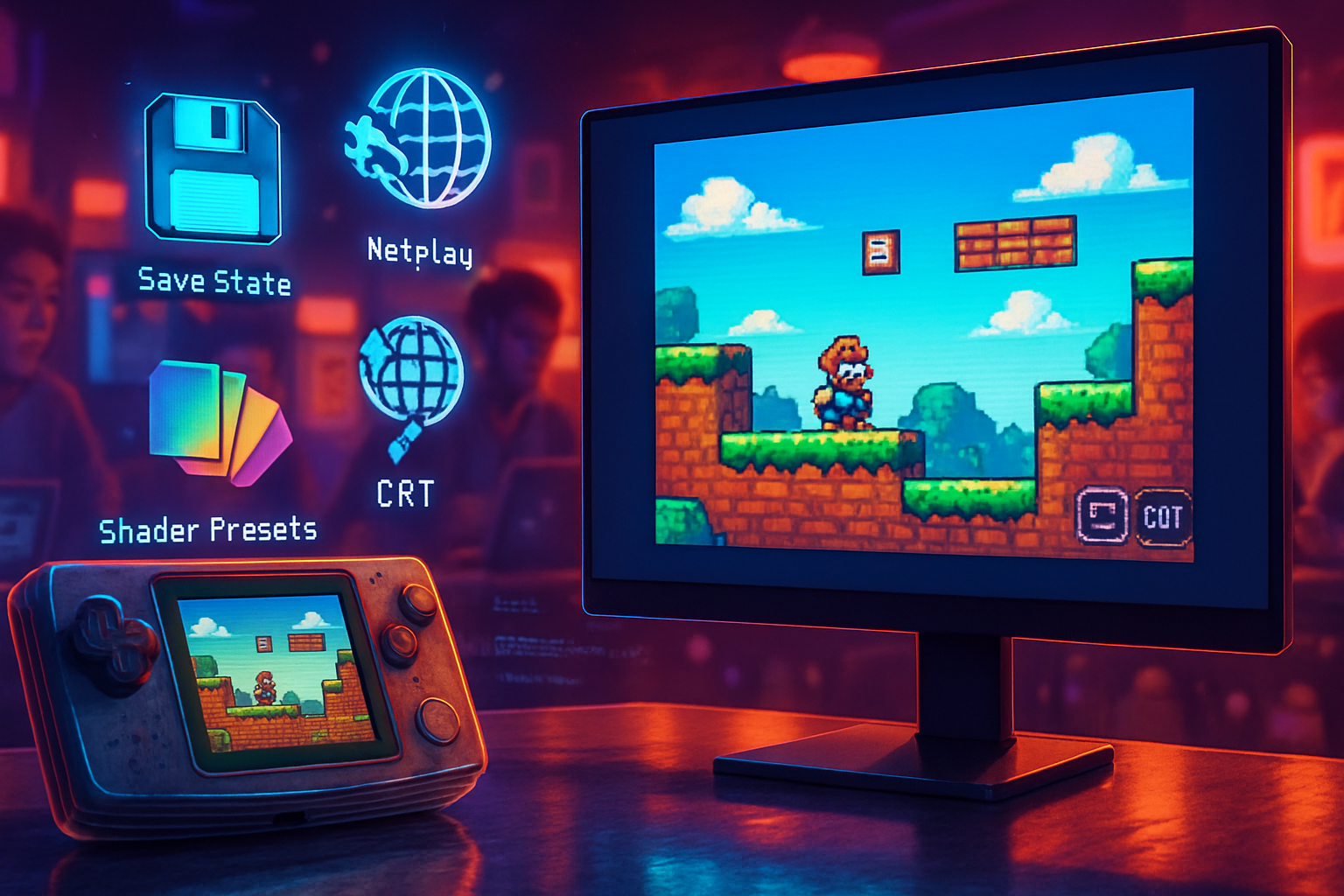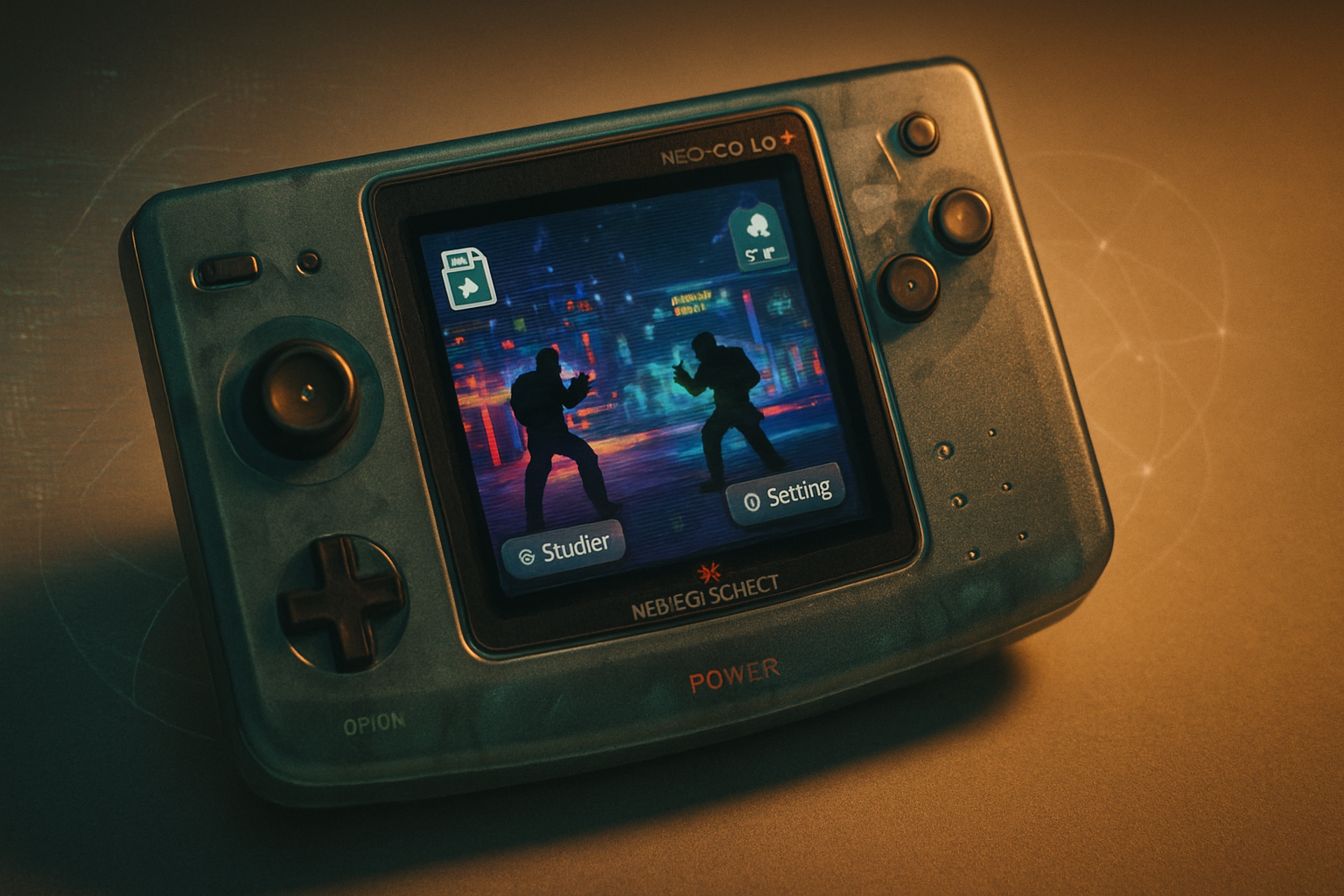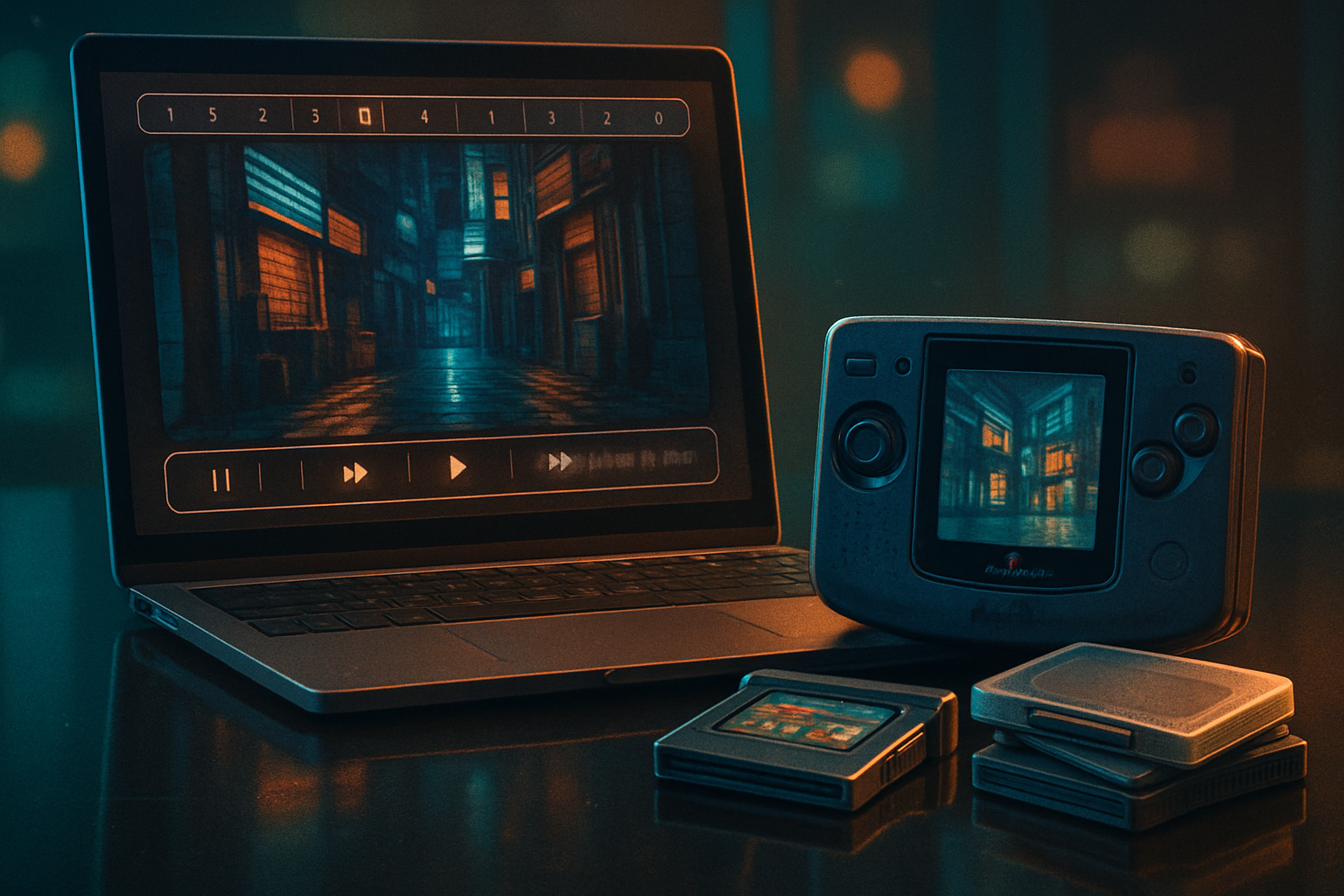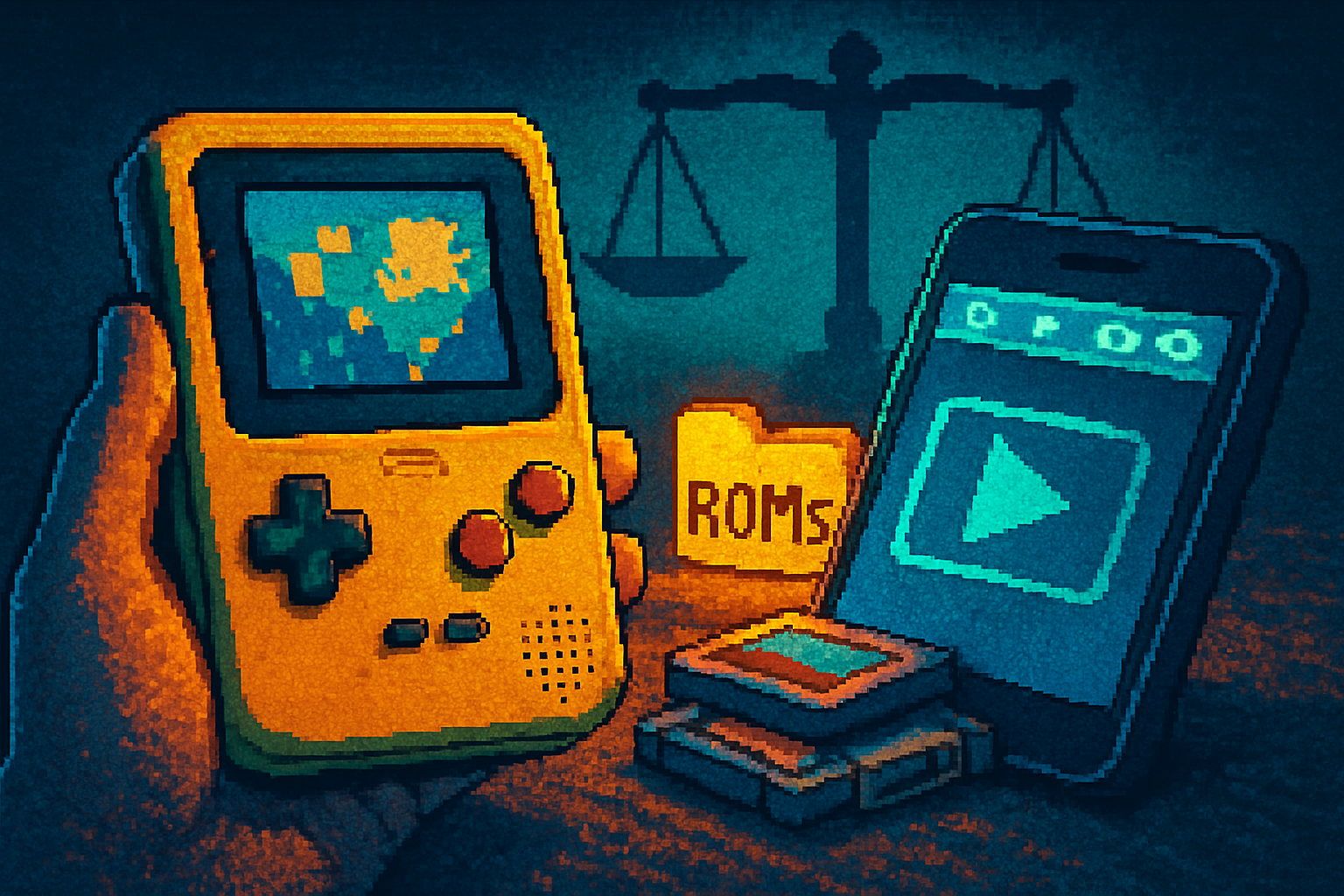· retrogaming · 7 min read
The Underrated Gems of the Neo Geo Pocket: A Hidden Library
A guided tour of lesser-known Neo Geo Pocket and Neo Geo Pocket Color titles that still shine - exploring their gameplay mechanics, surprising stories, and the distinctive pixel art that makes the system magical.
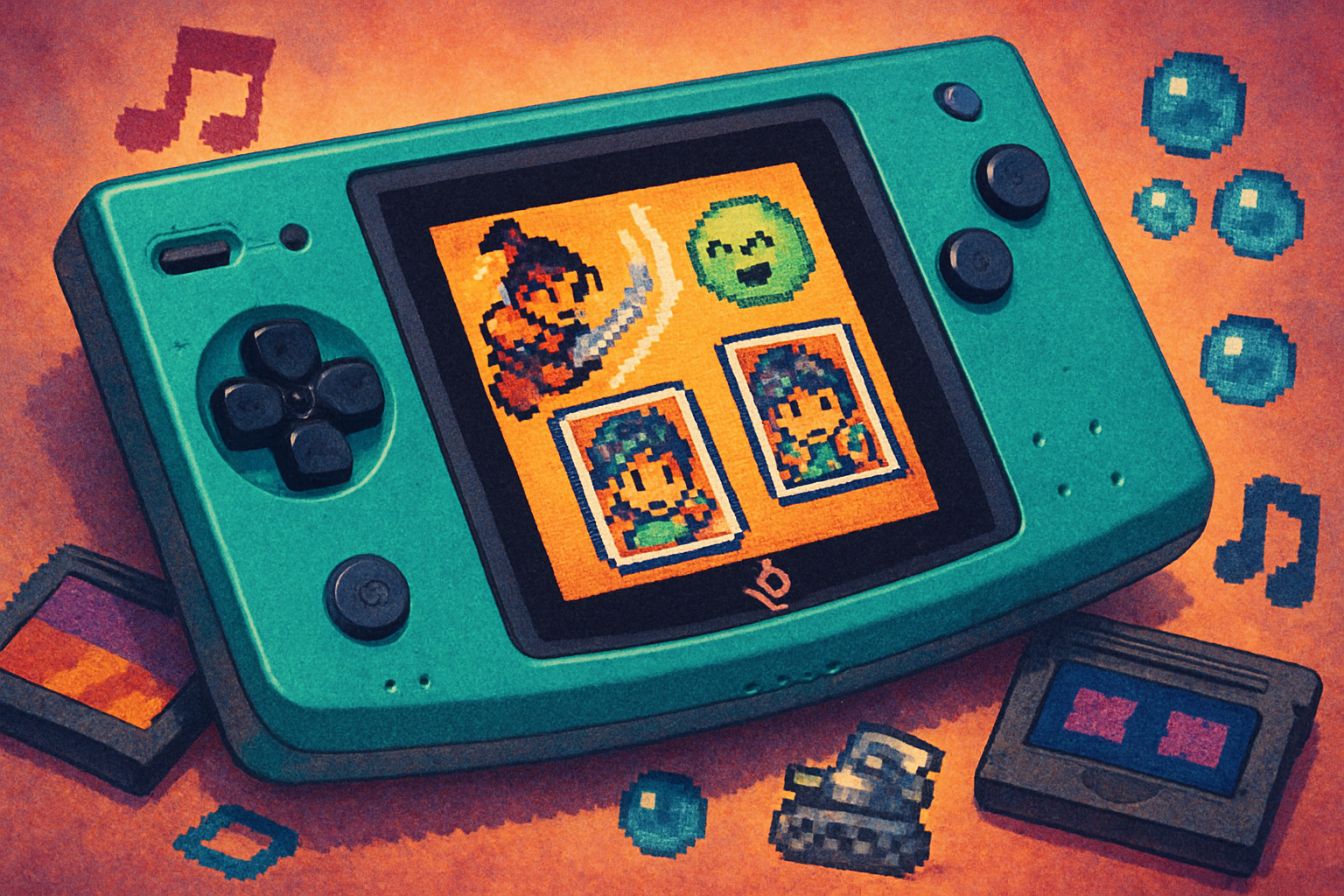
Why the Neo Geo Pocket still deserves a second look
Short-lived but beloved, SNK’s Neo Geo Pocket (and its Color successor, the NGPC) produced a compact library packed with creative ideas. Limited palettes and small screens forced developers to prioritize clarity, animation, and character - and that constraint became the system’s aesthetic strength. The result: tiny games with enormous personality, experimental genres, and crisp, expressive sprite work.
Below are some of the most rewarding - and often overlooked - titles from the Neo Geo Pocket family. For each I cover what makes them special: core mechanics, story or theme hooks, and the art/animation flourishes that show off the hardware.
(If you want a quick system overview first, see the Neo Geo Pocket Color page.)
- Neo Geo Pocket Color: https://en.wikipedia.org/wiki/Neo_Geo_Pocket_Color
Card Fighters’ Clash (and Card Fighters’ Clash: Second Deck)
- Quick pitch - A deceptively deep collectible card game built around SNK and Capcom rosters, surprisingly faithful to the paper experience.
- Gameplay mechanics - Deck-building with unit placement, resource management and a surprisingly tactical playfield. The pace is brisk because battles are simplified for handheld play, but strategy remains (positioning, card synergy, combo timing). Portable link play made trading and battling with friends a major draw.
- Story / presentation - There’s no sprawling single-player epic - the charm is meeting recognizable SNK/Capcom faces rendered in tiny, expressive chibi sprites and building competitive decks from them.
- Art that pops - The card illustrations are small but detailed, and the in-game sprites animate with personality. The designers used exaggerated silhouettes and bold color choices so characters read instantly on the tiny screen.
- Why it’s underrated - Dedicated card-game players praise its balance and depth, but mainstream attention often went to the handheld fighting and platformer ports. If you like deck-building distilled for pocket-sized sessions, this is a must.
Reference: https://en.wikipedia.org/wiki/Card_Fighters%27_Clash
Dark Arms: Beast Buster
- Quick pitch - A hybrid action-RPG / light-gun shooter concept turned into a tense, atmospheric hand-held adventure.
- Gameplay mechanics - You explore, collect “Dark Arms” (weapons that level up and mutate), and engage in realtime combat; weapons develop personalities. Resource management and risk-reward in weapon choices are central.
- Story / presentation - A moody monster-hunting premise that’s darker than the NGPC usually gets. It blends horror-lite atmosphere with RPG progression, giving handheld players a taste of sustained narrative stakes.
- Art that pops - The palette is limited, but character portraits and monster designs use contrast and silhouette to convey creepiness and weird details - impressive for the platform.
- Why it’s underrated - It wasn’t the flashy fighter many buyers expected from SNK, so it flew under the radar. It’s a great example of how creative design can deliver genre mash-ups on constrained hardware.
Reference: https://en.wikipedia.org/wiki/Dark_Arms:_Beast_Buster
Cool Cool Toon (Japan-only)
- Quick pitch - A rhythm game with vibrant cartoon visuals and surprising technical polish - one of the NGPC’s true experiments.
- Gameplay mechanics - Timing-based inputs and pattern recognition, made unique with a colorful presentation and varied song design. Its approach encouraged replay to master rhythm and flow.
- Story / presentation - Playful characters and whimsical stages give the game a light-hearted, showtime vibe.
- Art that pops - Bright, cartoony sprites and highly readable UI made the rhythm feel tactile even on a small screen. The animation exaggeration helps convey the beat visually when audio cues are subtle.
- Why it’s underrated - Region-lock and limited distribution kept it hidden outside Japan. For players who discover it, it’s a delightful oddity that shows how the system could host genres beyond arcade-style ports.
Reference: https://en.wikipedia.org/wiki/Cool_Cool_Toon
Sonic Pocket Adventure
- Quick pitch - A smart, original Sonic experience built for a tiny screen - not just a truncated port, but a redesign that plays to the NGPC’s strengths.
- Gameplay mechanics - Fast-paced platforming distilled into compact, well-designed stages. Level layouts emphasize flow, loops, and speed without letting the screen become confusing.
- Story / presentation - Classic Sonic characters and simple goals, but the stage design often presents new ways to exploit Sonic’s mobility in short bursts.
- Art that pops - Sharp sprite work and smooth animation make Sonic feel alive; clever palette use and background layering suggest depth on a limited display.
- Why it’s underrated - It’s mentioned often in fan lists, but many players never tried it at the time because the NGPC had limited market penetration. It remains a model for how to adapt big-console speed to a pocket format.
Reference: https://en.wikipedia.org/wiki/Sonic_Pocket_Adventure
Bust-A-Move Pocket (Puzzle Bobble Pocket)
- Quick pitch - The classic bubble-popping formula, optimized for quick sessions and tight controls.
- Gameplay mechanics - Simple aim-and-fire mechanics evolve into patience-heavy matching strategy. Puzzles scale from immediate “clear fast” tactics to longer planning sessions when the board gets messy.
- Story / presentation - Cute characters and cheerful stages - perfect for short commute play.
- Art that pops - Character portraits and emotive reactions make even failed attempts entertaining. The game leans into bright primary colors that read well in handheld contexts.
- Why it’s underrated - As a puzzle port, it didn’t grab the same headlines as fighting and platformer entries - but it’s an excellent, clean implementation of the formula.
Reference: https://en.wikipedia.org/wiki/Bust-A-Move_Pocket
Puyo Pop (Puyo Puyo)
- Quick pitch - Another enduring puzzle formula that thrives in the NGPC environment thanks to clear readouts and fast chaining.
- Gameplay mechanics - Chain reactions and piece prediction are core; the game rewards forward thinking and pattern recognition - great for quick matches and multiplayer.
- Story / presentation - Cute characters, light narrative setup in single-player, and delightfully zany animations when chains hit.
- Art that pops - The Puyo blobs are expertly shaded to feel tactile; little celebratory animations sell the joy of pulling off a long chain.
- Why it’s underrated - Like many puzzle games, Puyo Pop didn’t always make headlines, but it’s a fantastic portable puzzler with tight controls and excellent pacing.
Reference: https://en.wikipedia.org/wiki/Puyo_Pop
Metal Slug: 1st Mission (and 2nd Mission)
- Quick pitch - Stripped-down but faithful Metal Slug run-and-gun design, adapted for bite-sized handheld play.
- Gameplay mechanics - Tight platforming and shooting, vehicular sequences, and weapon pickups simplified to suit the handheld’s button layout. The missions are shorter, making the series’ signature set-pieces more digestible.
- Story / presentation - The series’ tongue-in-cheek military theme and over-the-top boss encounters are preserved in scaled-down but lovingly animated form.
- Art that pops - Metallic shine, explosions, and fluid character frames are all captured with surprising clarity. The small-screen sprites are surprisingly expressive and retain the franchise’s charm.
- Why it’s underrated - Fans of the arcade originals often overlook these because they’re compact; but they’re great for playing in short bursts and show off how faithful ports can feel when thoughtfully reworked.
How these games show the NGPC’s unique strengths
- Economy of design - Limited resolution and palettes forced developers to make every pixel count - characters read instantly, animations are economical and expressive.
- Gameplay-first mentality - Sessions are short and focused. Many titles rework genres for quick loops (deck-building duels, bite-sized platforming, puzzle solves), and that design constraint leads to highly replayable mechanics.
- Personality - With small sprites, designers leaned on exaggerated poses, bold silhouettes, and punchy musical cues. That created games whose emotional expression is large despite tiny visual real estate.
How to experience these games today
- Physical cartridges and imports - The original route - collector’s market prices vary. Cartridges are tactile trophies and sometimes the only way to get region-locked Japanese releases.
- Re-releases and compilations - A few NGPC titles have found their way into modern compilations; watch for official SNK collections and digital storefronts.
- Emulation - For research and preservation, emulation is often the most accessible way to try region-locked or expensive cartridges. Always check legal and ethical considerations for ROM usage.
Final thoughts: revisit the small-screen magic
The Neo Geo Pocket family wasn’t about raw horsepower - it was about clarity, design discipline, and personality. The titles above reward players who appreciate tight mechanics, bold pixel art, and inventive genre spins. If you loved arcade SNK games but missed the handheld era, or if you just want games built with constraints in mind, the NGPC’s underrated gems are waiting - small cartridges, big ideas.
If you’d like, I can compile a prioritized playlist (short-to-long sessions), or give tips on which cartridges to hunt for first.
